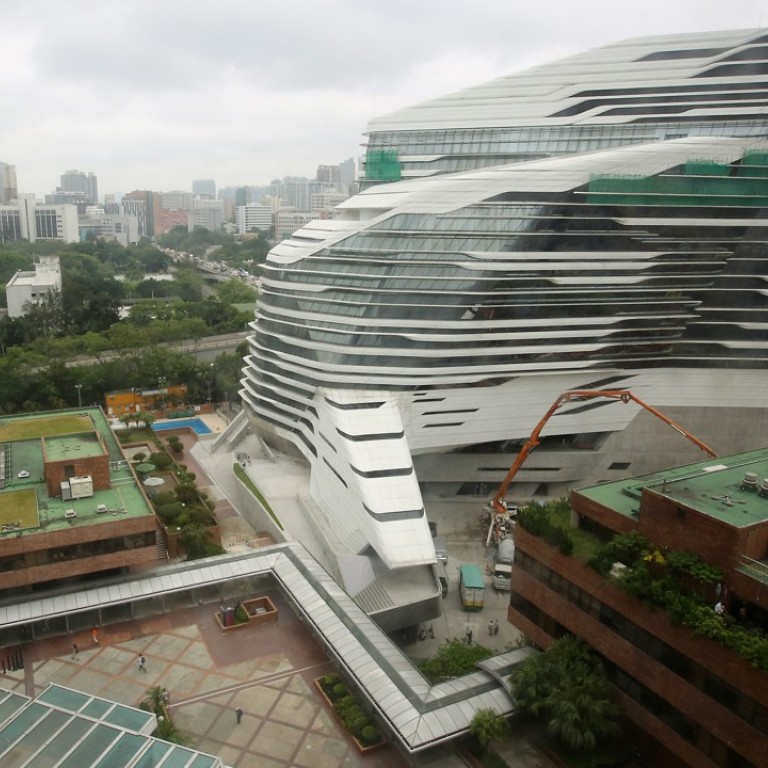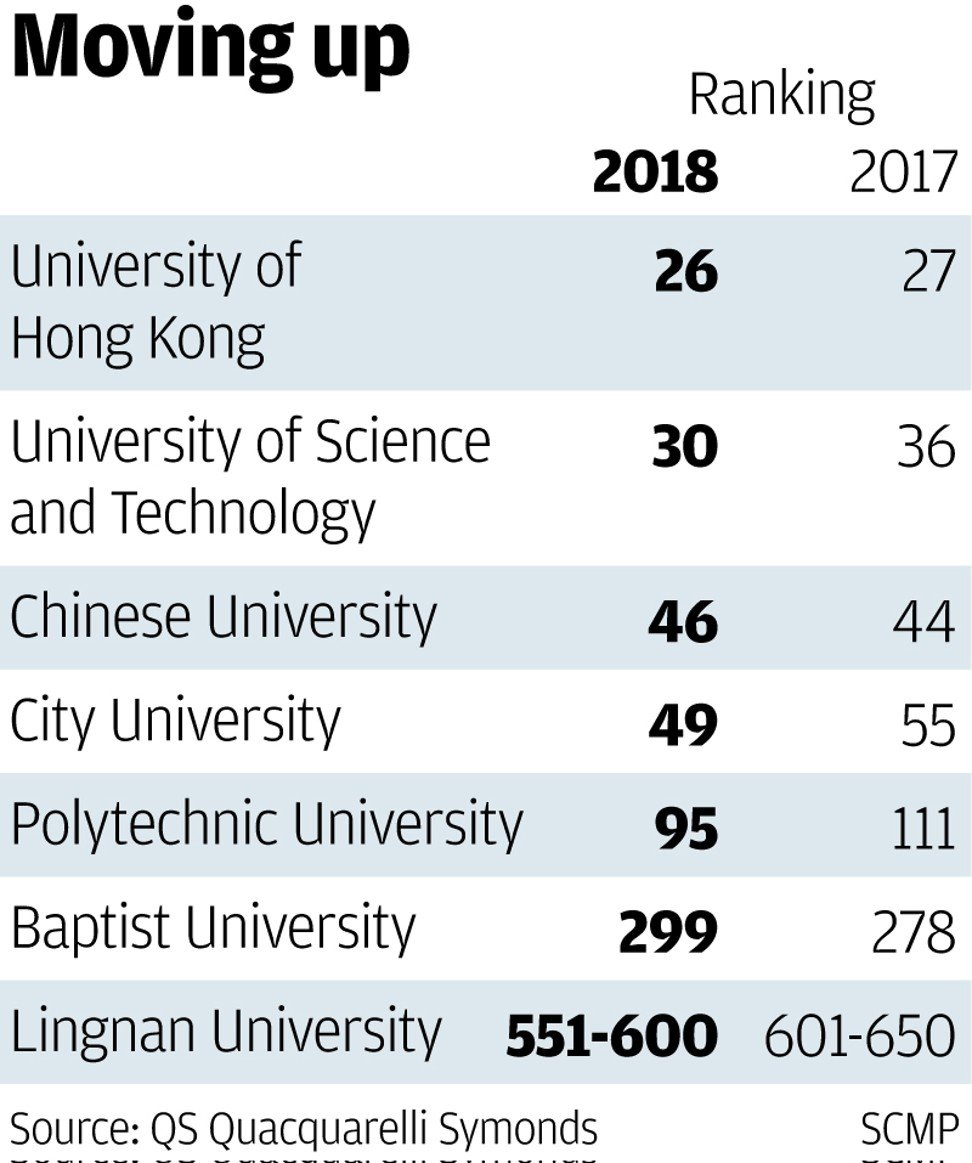
Five Hong Kong universities make the grade for first time in QS rankings
Polytechnic University is latest local institution to make the top 100, coming in at 95th in latest rankings; City University enters top 50 for first time
Hong Kong for the first time saw five of its universities placed in the top 100 of the QS World University Rankings.
Polytechnic University was the latest local educational institution to break into the top 100, after jumping 16 places to 95th position in the latest rankings published on Thursday.
City University entered the top 50 for the first time at 49th.
The University of Hong Kong, the city’s highest ranked school, nudged up one place to 26th, closely following Tsinghua University in Beijing.
Hong Kong University of Science and Technology was 30th. Chinese University dropped two places to 46th.
Baptist University slipped 21 places to 299th while Lingnan University rose from a range of 601 to 650 to 551 to 600. 551 to 600.
QS research director Ben Sowter said all seven Hong Kong universities scored above 99 out of 100 on the internationalisation ranking, meaning 45 per cent of the faculty were non-local.
The company does not collect data on the proportion of students from mainland China.
“Ideally, the faculty of a university should be internationally diverse, opening up teaching and research to diverse perspectives and paving the way for impactful international partnerships,” Sowter said.
“My sense from having visited most of the Hong Kong universities we feature over the past decade is that they do have a lot of international faculty from beyond China.”
Other metrics used to rank the institutions include academic reputation, employer reputation, faculty-to-student ratio, research paper citations per faculty and number of international students.
Five local universities lost ground in terms of the proportion of international students, according to QS.
About 76 per cent of non-local students enrolled in the eight public universities in the 2015-16 academic year were from the mainland, the city’s Audit Committee said in a November report.
Only 3.9 per cent of new students were from places other than the mainland or Hong Kong, the auditor found, adding universities should attract more overseas students.
The University of Hong Kong, University of Science and Technology, Baptist University and City University said they would all continue to provide quality education for students.
Chinese University said different evaluation criteria could result in different rankings and it would continue to strive for excellence in teaching and research.
Singapore’s Nanyang Technological University remained the top-ranked Asian institution after climbing two places to 11th – the highest ranking ever reached by an Asian university. It was followed by the National University of Singapore, Tsinghua and the University of Hong Kong.
The Massachusetts Institute of Technology, Stanford University and Harvard University in the United States topped the world rankings.



